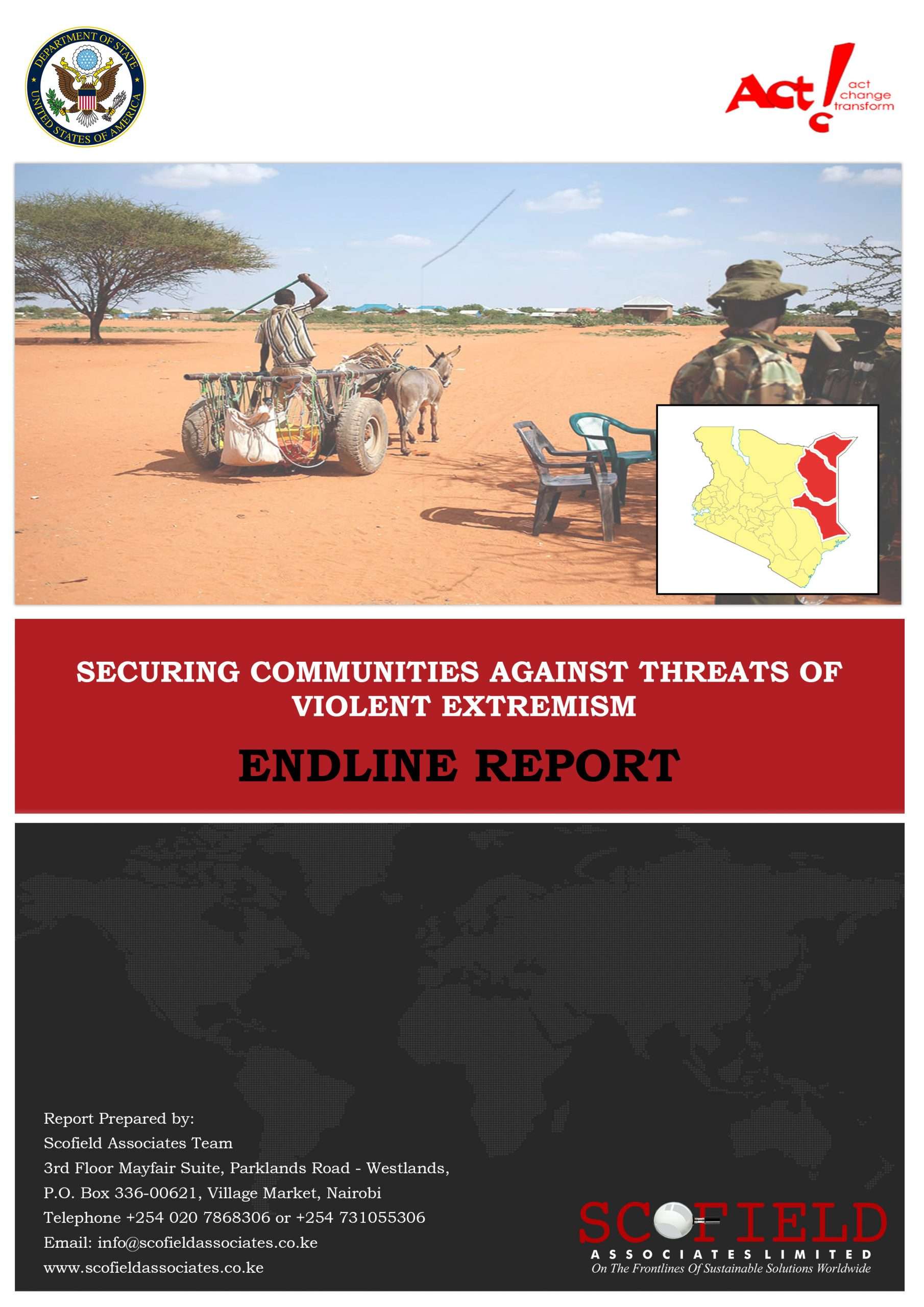
Securing Communities Against Threats of Violent Extremism (SECURE) - Project Evaluation Report
Reports
August 08, 2018
Executive Summary
The comprehensive report presents an in-depth evaluation of Preventing/Countering Violent Extremism (P/CVE) initiatives undertaken in Mandera, Wajir, and Garissa counties. The overarching goal of the project was to empower community leaders, civil society organizations, and local government bodies to collaboratively design community-based strategic plans for CVE. These plans aimed to shield communities from imminent threats of violent extremism and radicalization by leveraging technology for early warning and response mechanisms. The report distills the key findings as follows:
- Human Rights and Military Actions: The report sheds light on a reduction in reported human rights abuses. However, it highlights concerns raised by communities in Garissa and Mandera regarding alleged brutal actions by the military within these regions.
- Capacity Building Through SECURE Project: The SECURE project played a pivotal role in enhancing the community’s ability to diagnose and identify instances of violent extremism within their midst. This capacity-building effort equipped the community with valuable skills and knowledge.
- Empowerment of Women-Led Organizations: A noteworthy accomplishment of the SECURE project was the active engagement of women-led organizations. This inclusion provided a strong impetus for women’s participation in the development of county strategic documents. Moreover, it facilitated avenues for reporting incidents and facilitated the establishment of parenting forums. A significant achievement emerged in the form of child accountability processes, which enabled information sharing within the community regarding children.
In light of these findings, the report puts forth several recommendations to enhance the effectiveness and sustainability of P/CVE efforts:
- Prioritize Sustainability: The report underscores the critical importance of ensuring the long-term sustainability of projects. Recognizing the existence of other tools within the community, such as the Uwiano platform, calls for a strategic approach to avoid redundancy and optimize resource utilization.
- Leverage Existing Platforms: The report suggests that the Mulika Uhalifu initiative could explore opportunities for collaboration with other platforms. By doing so, duplication of roles can be minimized, and the overall impact of P/CVE efforts can be maximized.
- Broaden Scope of Baseline Analysis: While the baseline analysis focused on early warning mechanisms, the report emphasizes the need for a more comprehensive examination. This includes delving into the definition of early warning mechanisms, their operational mechanisms, existing gaps, and strategies for improving the current situation.
- Consider Multi-Agency Processes: The implementation of Mulika Uhalifu was based on certain assumptions, including the absence of any pre-existing platform. Going forward, it is recommended to factor in the complexities of investigation processes, which involve multi-agency collaboration and face-to-face interactions.
- Address Specific Challenges: The report underscores the importance of addressing specific challenges faced by P/CVE initiatives. These challenges include inadequate feedback mechanisms, communication network issues, and security threats, particularly in regions like Garissa.
In summary, the report provides a comprehensive analysis of P/CVE activities conducted in Mandera, Wajir, and Garissa counties. It highlights both achievements and areas for improvement, offering valuable insights to enhance the effectiveness and sustainability of future CVE efforts in these regions.
